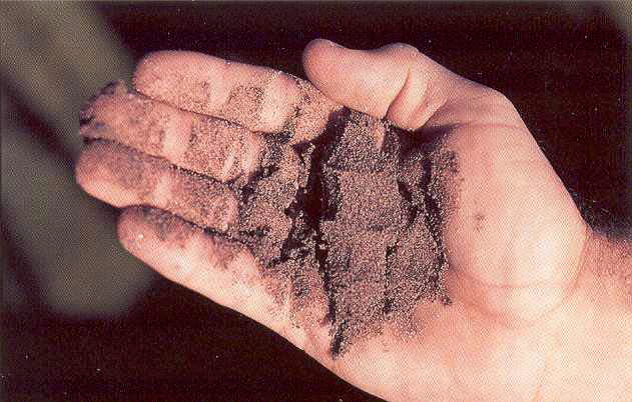. A rule of thumb is that irrigation should be done when about 50% of the water has been depleted from the soil in the plant's root zone. This 50% value, however, allows a buffer of water in the soil in case the weather suddenly turns hot and windy. Sandy soils hold less water than clay soils and must be irrigated more frequently. A common misperception is that it takes more water to grow plants in sandy soil than in clay soil; however, the total amount required for the whole year is the same for both soil types. The amount of sunlight, wind, temperature, and humidity control how much water a plant needs, and the soil is only the reservoir.
Determining water content by soil texture
To check the water content in the soil based on the soil texture, dig 8 to 16 inches down into the soil with a trowel, shovel, or soil tube and feel the soil. At about 50% available water:
- coarse soil appears almost dry and form a ball that does not hold shape
- loamy soil forms a dark ball that is somewhat moldable and can form a weak ribbon when squeezed between the fingers
- clayey soil forms a good, dark ball, makes a ribbon an inch or so long, and slightly sticky
This method, however, gives only an approximate water content; instruments can give more precise readings.
For more information, refer to the USDA guidelines at:
http://www.nrcs.usda.gov/Internet/FSE_DOCUMENTS/nrcs144p2_051845.pdf
Attached Images:
